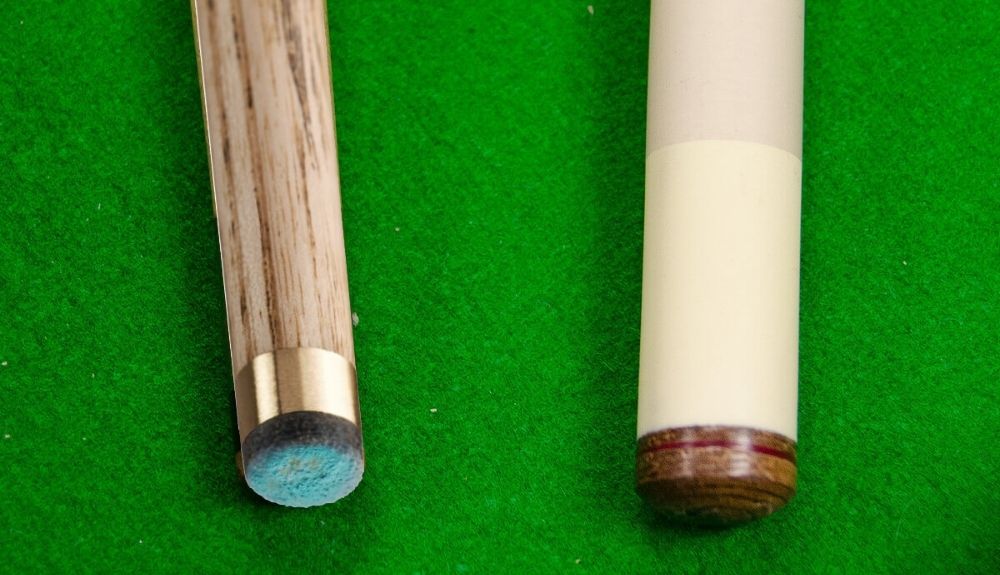Best Pool Cue Tips: Features, Hardness & Material
What separates a good pool player from a great one? Often, its the nuanced understanding and application of seemingly minor details. Cue tips, those humble-looking leather nubs at the end of your cue stick, are one such detail, wielding surprising influence over your game. Ignoring their importance is akin to a Formula 1 driver neglecting their tires catastrophic results are sure to follow.
Choosing a cue tip can feel overwhelming with the sheer variety available. From super soft to rock hard, laminated to layered, the options seem endless. But fear not, navigating this crucial decision doesn't require a PhD in physics. Understanding a few key features will empower you to select the perfect tip to elevate your game, whether you're a seasoned pro or just starting out.
| Hardness | Description | Best Use |
|---|---|---|
| Super Soft | Maximum ball grip, increased spin, but wears faster. | Draw shots, English, finesse play. |
| Soft | Balance of grip and control. | All-around play, suitable for most players. |
| Medium | Good control, less spin than softer tips. | Breaking, less spin-sensitive shots. |
| Hard | Maximum power transfer, minimal spin. | Break shots, jump shots. |
Learn more about cue tips
One of the most critical factors to consider is hardness. Super soft tips, like the Kamui Clear Black, offer unparalleled grip on the cue ball, allowing for extreme spin (also known as English). This makes them ideal for players who prioritize intricate shot-making and precise ball control. However, this heightened grip comes at the cost of faster wear. Soft tips provide a balanced approach, offering good grip and control without sacrificing durability. They are a versatile choice, suitable for most playing styles. Medium tips offer increased control and are less sensitive to spin, making them a good option for breaking. Finally, hard tips maximize power transfer, ideal for forceful break and jump shots, where accuracy is less crucial than raw power.
Shape is another crucial factor. While personal preference plays a role, the most common shapes flat, rounded, and pointed each offer distinct advantages. A flat tip provides maximum contact with the cue ball, promoting consistent contact and spin. Rounded tips concentrate the impact on a smaller area, increasing power transfer and minimizing deflection. Pointed tips offer the finest level of control for precise aiming and spin. Experimenting with different shapes will help you discover what best suits your game.
Tip diameter is also an important consideration, particularly for break shots. A larger diameter creates more surface area contact with the cue ball, resulting in a more powerful break. However, it can also decrease accuracy for regular shots. Finding the right balance between power and precision is key.
Maintenance is paramount, regardless of the tip you choose. Regular chalking is essential for maximizing grip and preventing miscues. Gently brushing the tip to remove chalk residue and dirt buildup will prolong its life. Maintaining a clean tip ensures consistent performance and prevents unwanted deflection.
Material is another key aspect. While leather is the most common material, offering excellent grip and control, other materials like phenolic resin are becoming increasingly popular. These synthetic tips offer exceptional durability and consistency, making them a good choice for players who value longevity.
While brands like Elk Master have long been staples in the cue tip world, newer brands like Kamui and Cuesol are pushing the boundaries of performance and innovation. Kamui's Clear Black, with its unique layered construction, has become a favorite among professional players. Cuesol offers a diverse range of tips to cater to different playing styles.
The weight of your cue and the size of your tip should work in harmony. Lighter cues often pair well with smaller tips for finesse, while heavier cues benefit from larger tips for increased power and stability. This balance between cue weight and tip size is vital for achieving optimal cue ball control.
Ultimately, the "best" cue tip is subjective. There's no one-size-fits-all solution. Experimentation is key to finding the right tip for your game. Considering factors like hardness, shape, diameter, material, and maintenance, you can fine-tune your equipment and unlock your full potential on the pool table. Its the subtle adjustments, the attention to detail, that often separates the amateurs from the masters. Choose wisely, and watch your game transform.



Detail Author:
- Name : Mr. Donato Mann
- Username : gustave.lubowitz
- Email : demarcus74@kemmer.com
- Birthdate : 2006-02-25
- Address : 902 Bins Plaza Suite 110 South Hope, IA 39029-5388
- Phone : 1-651-747-9146
- Company : McDermott LLC
- Job : Pipelayer
- Bio : Explicabo iusto quis sint veritatis. Sint ut eius quis consectetur. Et accusamus molestiae dolor quas.
Socials
twitter:
- url : https://twitter.com/kautzerl
- username : kautzerl
- bio : Ab nihil aut dicta qui. Dolor eum eum itaque illo. Rem quasi nemo accusantium ut.
- followers : 1380
- following : 90
instagram:
- url : https://instagram.com/lkautzer
- username : lkautzer
- bio : Et id explicabo accusamus dolores. Fuga recusandae eos consectetur qui omnis porro.
- followers : 4133
- following : 2083
linkedin:
- url : https://linkedin.com/in/kautzer1989
- username : kautzer1989
- bio : Voluptatum modi eaque quam.
- followers : 6239
- following : 2430